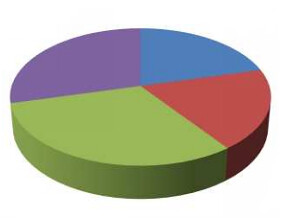There is so much more a structural engineer can do! The first step is to become educated on the issues and different roles within a project that structural engineers can play. The report “Sustainability Guidelines for Structural Engineers” is a good starting point. It covers topics from what can be done with each of the common Structural Materials, to Reuse, Design for Deconstruction and Adaptability, Integration with other building systems, Infrastructure, Life Cycle Assessment, and Green Codes. In the meantime, we will be populating the Resources page of this site with useful links. Please check back frequently.
Read more...
 Sustainability Guidelines
Sustainability Guidelines Thermal Bridging Solutions in MSC
Thermal Bridging Solutions in MSC Carbon Working Group White Paper
Carbon Working Group White Paper Top 10 FAQs Answered
Top 10 FAQs Answered

Sustainability Guidelines for the Structural Engineer
Learn strategies for integrating sustainability into structural design. More

Thermal Bridging Solutions in MSC
April 2012 Issue of MSC: "Thermal Bridging Solutions: Minimizing Structural Steel's Impact on Building Envelope Energy Transfer." More

Carbon Working Group White Paper
Structures and Carbon: How Materials Affect the Climate. More info.

Top 10 Structural Sustainability FAQs
The LCA working group provides answers to 10 FAQs asked by conscientious structural engineers, more
Showing posts with label FAQ. Show all posts
Showing posts with label FAQ. Show all posts
Wednesday, March 21, 2012
What does structural engineering have to do with sustainability?
Categories :
Structural engineers affect the sustainability of our built environment in several ways. It is often said that sustainability stands on three legs of environmental, societal and economic sustainability. In terms of the environment, structures in the form of buildings and infrastructure take up an enormous amount of material resources and energy in their manufacture, transport and construction, and end of life. Structures are also the first item to be constructed on a project and can inhibit or enhance the subsequently installed systems that greatly affect operational energy performance. Thoughtful material selection and specification can drive responsible sourcing to reflect both environmental and societal stewardship. As engineers making material choices for infrastructure as well as buildings, we "spend" an enormous amount of carbon on behalf of the public. Long term energy performance of buildings is crucial to reducing are carbon emissions over time, but the carbon we embed in our structures through the materials we use is carbon we need to avoid spending now. Lastly, structural engineers are an indispensable player in the team of designers that connect the purse strings of the developer to the activities of the builder who procures and constructs the final product. Our communications and design decisions with these two parties largely determine whether the three pillars of sustainability can truly be upheld in balance.
Read more...
What does the SEI Sustainability Committee do?
Categories :
Please see our Mission & Goals. The primary task of committee members since inception of the committee in 2005 has been towards publication of the ASCE Report “Sustainability Guidelines for Structural Engineers.” Committee members are now pursuing specific objectives within various Working Groups. Working group meetings and the monthly conference calls for all members are posted on the Calendar. Our monthly meeting minutes are available here.
Read more...
How do I join the SEI Sustainability Committee?
Categories :
Membership in the SEI Sustainability Committee is by application only. While we are always interested in talented and energetic new members, committee enrollment is limited. New members are accepted based on experience and/or interests, and are encouraged to participate beyond the minimum requirements our committee has set forth. Applicants must be current members of ASCE or SEI in order to participate. More information about membership and application procedures are available here. Current members are listed here.
Read more...
Subscribe to:
Posts (Atom)









